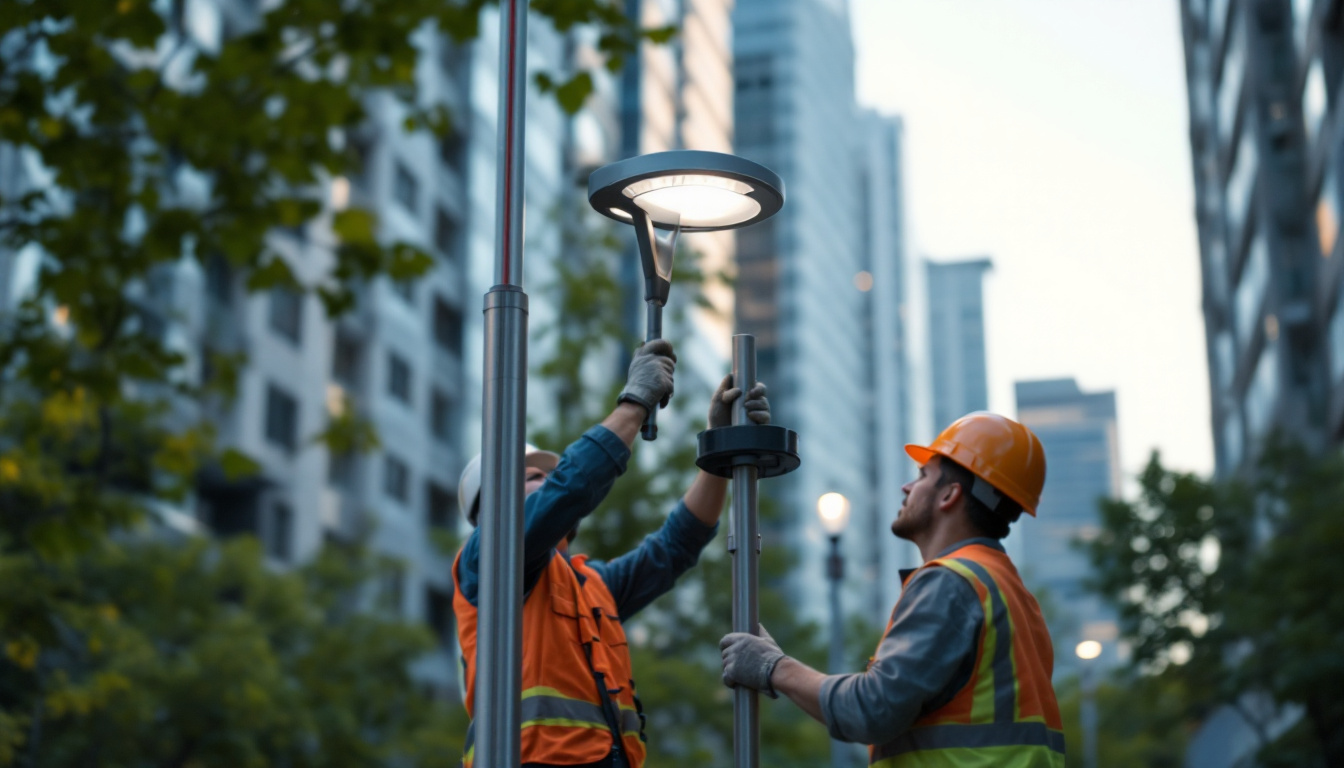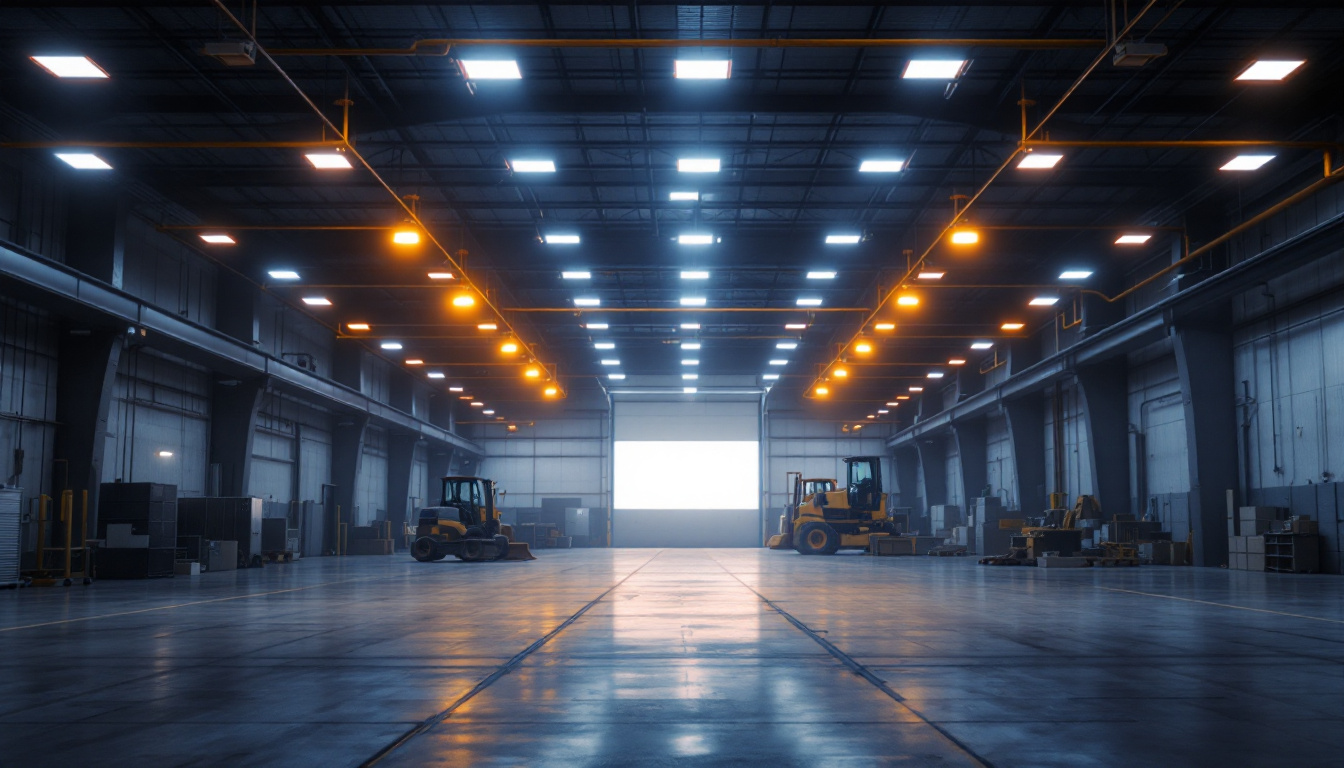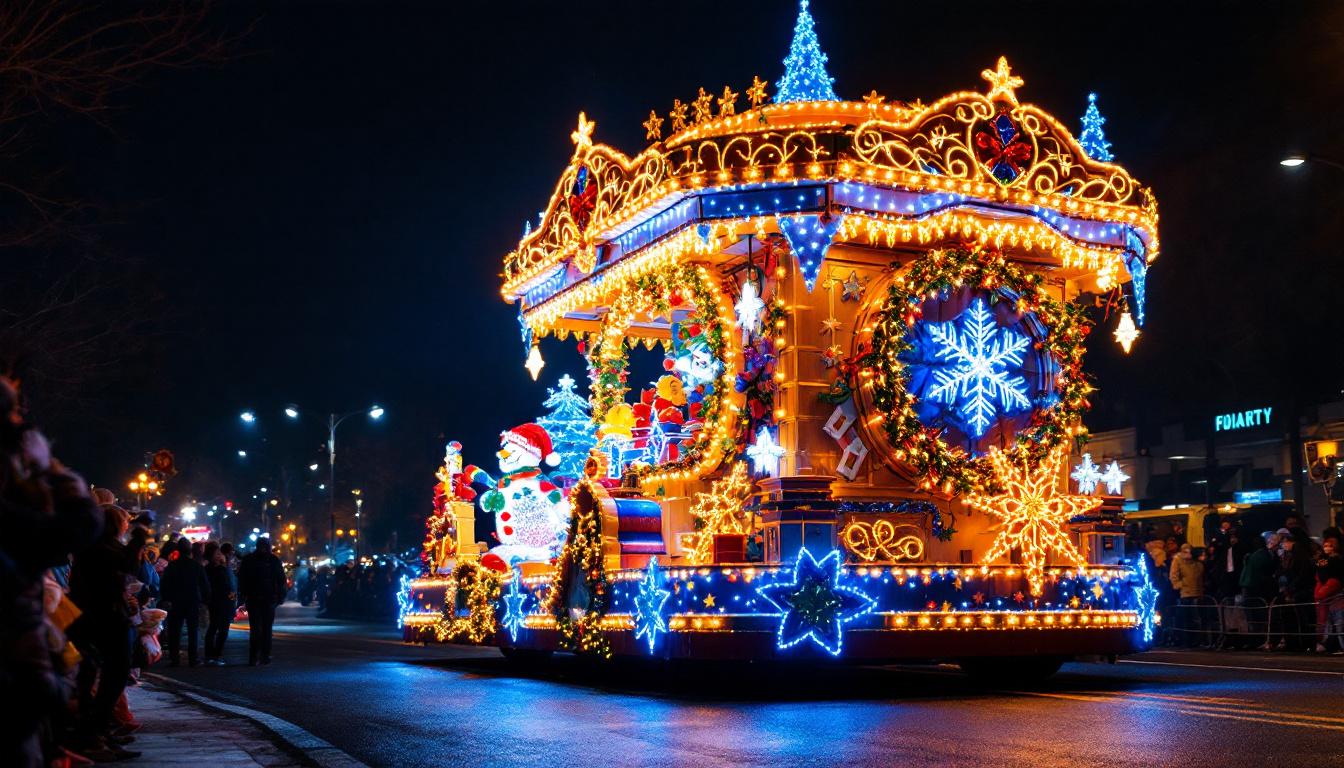
In the realm of commercial lighting, light poles play a pivotal role in enhancing safety, visibility, and aesthetics. For lighting contractors, understanding the nuances of light pole installation and maintenance can significantly influence project outcomes. This article explores how advancements in light pole technology and design are transforming the way lighting contractors operate, ultimately leading to improved efficiency and client satisfaction.
Light poles serve as the backbone of outdoor lighting systems in commercial environments. They provide essential illumination for parking lots, streets, walkways, and other public spaces, ensuring safety and security for both pedestrians and vehicles. Additionally, well-designed lighting can enhance the visual appeal of a property, making it more inviting and functional.
For contractors, selecting the right light poles involves considering factors such as height, material, and design. These choices can affect not only the effectiveness of the lighting but also the overall aesthetic of the commercial space. Understanding these elements is crucial for delivering a successful lighting project.
Moreover, the integration of smart technology into light poles has revolutionized their functionality. Many modern light poles are now equipped with sensors that can detect ambient light levels, allowing for automatic dimming or brightening based on the time of day or weather conditions. This not only enhances energy efficiency but also prolongs the lifespan of the lighting fixtures. Additionally, some poles are designed to accommodate surveillance cameras and other security features, further increasing the safety of the environment they illuminate.
Furthermore, the choice of materials for light poles has evolved significantly. Traditional materials like steel and aluminum are now often complemented by innovative composites that offer greater durability and resistance to corrosion. This is particularly important in areas with harsh weather conditions, where light poles must withstand the elements while maintaining their structural integrity. The aesthetic options have also expanded, with decorative designs available that can complement the architectural style of a commercial property, thereby creating a cohesive look that enhances the overall branding of the business.
The lighting industry has witnessed significant technological advancements that have improved the functionality and efficiency of light poles. From energy-efficient LED fixtures to smart lighting systems, these innovations are reshaping the landscape for lighting contractors.
One of the most notable trends in light pole technology is the shift towards energy-efficient solutions. LED lighting has become the standard for many commercial applications due to its lower energy consumption and longer lifespan compared to traditional lighting options. This shift not only reduces operational costs for clients but also aligns with growing sustainability goals.
Contractors who embrace these energy-efficient technologies can offer their clients substantial savings over the life of the lighting system. Moreover, integrating sustainable practices into projects can enhance a contractor’s reputation and appeal to environmentally conscious clients. The use of solar-powered light poles is gaining traction as well, allowing for even greater energy independence and reduced carbon footprints. These solar solutions harness renewable energy, making them an attractive option for municipalities and businesses looking to minimize their environmental impact.
Smart lighting systems are another significant development in the industry. These systems utilize sensors and connectivity to optimize lighting based on real-time conditions. For instance, motion sensors can adjust light levels based on pedestrian traffic, while ambient light sensors can dim or brighten lights depending on natural light availability.
For lighting contractors, incorporating smart technology into light pole installations can provide clients with enhanced control over their lighting systems. This not only improves energy efficiency but also allows for greater customization and adaptability to changing needs. Furthermore, the integration of IoT (Internet of Things) capabilities enables remote monitoring and management of lighting systems, allowing for predictive maintenance and reducing downtime. This level of sophistication can significantly enhance the operational efficiency of public spaces and commercial properties, making them safer and more user-friendly.
Additionally, the data collected from these smart systems can be invaluable for urban planning and development. By analyzing usage patterns and light levels, cities can make informed decisions about where to install new lighting or upgrade existing infrastructure, ultimately leading to smarter, more sustainable urban environments.
When selecting light poles for commercial projects, design plays a crucial role. The right design can complement the architecture of a building, enhance the surrounding landscape, and contribute to the overall ambiance of the space.
Light poles are available in various materials, including aluminum, steel, and fiberglass. Each material offers distinct advantages and disadvantages in terms of durability, maintenance, and aesthetic appeal. For instance, aluminum poles are lightweight and resistant to corrosion, making them ideal for coastal areas, while steel poles provide strength and durability for high-traffic environments.
Contractors must assess the specific requirements of each project to determine the most suitable material. Understanding the environmental conditions and potential wear and tear can guide these decisions, ensuring that the selected poles will stand the test of time.
The height of light poles is another critical consideration. Taller poles can provide broader illumination coverage, while shorter poles may be more suitable for pedestrian areas where lower light levels are desired. Additionally, the configuration of the lighting fixtures—such as the number of lights per pole and their arrangement—can greatly influence the effectiveness of the lighting system.
Contractors should work closely with clients to determine the optimal height and configuration based on the specific lighting needs of the space. This collaborative approach can lead to more tailored solutions that meet both functional and aesthetic requirements.
Proper installation of light poles is essential for ensuring their longevity and effectiveness. Lighting contractors must adhere to best practices to avoid common pitfalls and deliver high-quality results.
Before installation, a thorough site assessment is crucial. This involves evaluating the terrain, existing infrastructure, and potential obstacles that may affect the placement of light poles. Contractors should consider factors such as underground utilities, tree canopies, and the overall layout of the space.
Conducting a detailed site assessment allows contractors to make informed decisions about pole placement, ensuring optimal lighting coverage and minimizing the risk of future complications.
The stability of light poles is paramount for safety and performance. A solid foundation is essential to withstand environmental factors such as wind and snow loads. Contractors should follow manufacturer guidelines for anchoring and securing poles to ensure they remain upright and functional over time.
Utilizing appropriate materials for the foundation, such as concrete, can enhance the durability of the installation. Additionally, regular maintenance checks can help identify any signs of wear or instability, allowing for timely repairs.
Once light poles are installed, ongoing maintenance is necessary to ensure they continue to operate effectively. Lighting contractors can offer valuable services in this area, helping clients maintain their lighting systems and extend their lifespan.
Conducting regular inspections is vital for identifying potential issues before they escalate. This includes checking for burned-out bulbs, damaged fixtures, and signs of corrosion or wear. By proactively addressing these concerns, contractors can help clients avoid costly repairs and ensure consistent lighting performance.
Establishing a maintenance schedule can also help clients stay organized and ensure that their lighting systems are always in optimal condition.
As technology continues to evolve, upgrading components of existing light pole systems can enhance their functionality and efficiency. For instance, replacing outdated fixtures with newer, more energy-efficient models can significantly reduce energy consumption and improve lighting quality.
Contractors should stay informed about the latest advancements in lighting technology to provide clients with the best possible solutions. Offering upgrade options can also create additional revenue opportunities for contractors while enhancing client satisfaction.
Educating clients about the importance of lighting and the benefits of various technologies is essential for fostering strong relationships and ensuring project success. Lighting contractors should take the time to explain the choices available and the rationale behind their recommendations.
Every commercial space has unique lighting requirements, and understanding these needs is crucial for delivering effective solutions. Contractors should engage in open discussions with clients to assess their specific goals, preferences, and budget constraints.
By taking the time to understand each client’s vision, contractors can tailor their recommendations and create customized lighting plans that align with the client’s objectives.
After project completion, providing ongoing support is vital for maintaining client satisfaction. This can include follow-up visits, answering questions, and offering assistance with any issues that may arise. Building a reputation for excellent customer service can lead to repeat business and referrals, which are invaluable for lighting contractors.
Establishing a strong rapport with clients not only enhances their experience but also positions contractors as trusted experts in the field.
The evolution of light poles and commercial lighting solutions is transforming the way lighting contractors work. By embracing new technologies, understanding design considerations, and prioritizing client education, contractors can enhance their service offerings and improve project outcomes.
As the demand for energy-efficient and aesthetically pleasing lighting continues to grow, lighting contractors have a unique opportunity to position themselves as leaders in the industry. By staying informed about trends and innovations, they can adapt to changing market needs and provide clients with exceptional value.
Ultimately, the future of lighting contracting lies in a commitment to quality, sustainability, and client satisfaction. By focusing on these core principles, contractors can thrive in an ever-evolving landscape and contribute to the creation of safer, more inviting commercial spaces.
Ready to elevate your lighting projects with the latest advancements in light pole technology? At LumenWholesale, we provide lighting contractors like you with the highest quality, spec-grade lighting products at prices that can’t be beaten. Say goodbye to local distributor markups and hello to our extensive selection that meets the most rigorous industry standards. With free shipping on bulk orders, you can ensure your projects shine with reliability and high performance, all while keeping your costs down. Discover wholesale lighting at the best value and join the ranks of satisfied contractors who choose LumenWholesale for quality, affordability, and convenience.

Discover innovative strategies from top lighting contractors for enhancing your home’s exterior with smart lighting solutions.

Discover how to enhance your workspace with LED high bay shop lights by optimizing for maximum efficiency.

Discover how UFO LED lights are revolutionizing the lighting industry and impacting contractors’ profitability.

Discover how the Night Before Christmas Parade Float can reduce lighting contractors’ costs by up to 30%, boost efficiency, and enhance festive displays.